A&S Faculty Collect Top National Awards and Grants
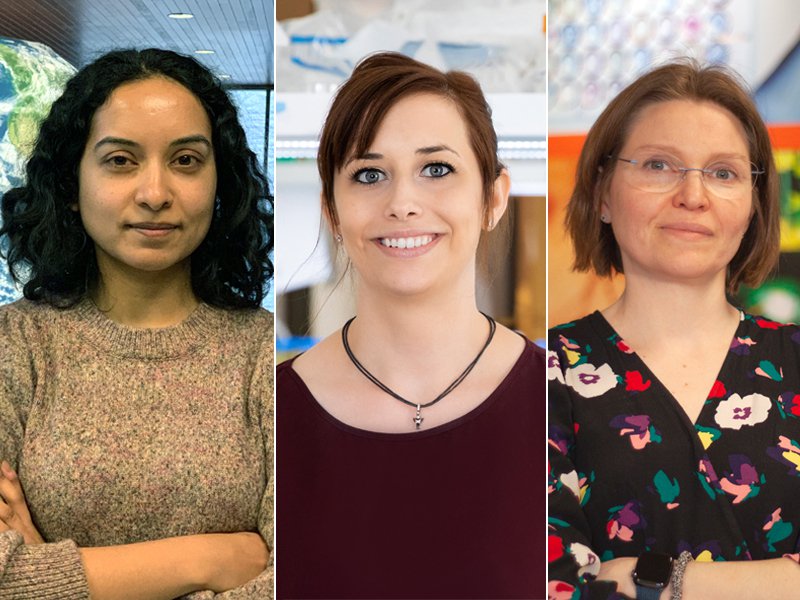
From left to right, professors Tripti Bhattacharya, Alison Patteson and Olga Makhlynets each received prestigious NSF CAREER grants in addition to other notable awards.
A trio of College of Arts and Sciences faculty members have received highly competitive national awards in recognition of their commitment to teaching and research excellence. Tripti Bhattacharya, Thonis Family Professor of Earth and environmental sciences, and Alison Patteson, assistant professor of physics, were named Alfred P. Sloan Foundation Fellows, an honor recognizing early-career scholars who represent the most promising scientific researchers working today. In addition, Patteson received a 2023 Cottrell Scholar award, a national honor that ranks her among the country’s best faculty researchers and teachers from the fields of astronomy, chemistry and physics.
Adding to the significant list of awards, Patteson, Bhattacharya and chemistry professor Olga Makhlynets have also won National Science Foundation (NSF) CAREER grants, the NSF’s most competitive award in support of early-career faculty who have the potential to serve as academic role models in research and education.
“Sloan fellowships, Cottrell Scholar awards and NSF CAREER grants are among the most prestigious distinctions for early career researchers, and we are incredibly fortunate to have winners of each in A&S this year,” says Alan Middleton, A&S associate dean of research and scholarship. “These honors affirm our standing as a premier research institution. I congratulate Tripti, Alison and Olga, and look forward to seeing their future research breakthroughs.”
Read more about each scientist in the following sections:
Tripti Bhattacharya: Predicting the Future with Data from the Past
Predicting the Future with Data from the Past
As a climate scientist, Tripti Bhattacharya uses evidence from the geological past to understand how rainfall will change in the future as a result of global warming. While rainfall has a profound effect on societies, it is one of the least understood aspects of future climate changes, says Bhattacharya, whose work on the subject has been published in journals including Nature Geoscience, Science, AGU Advances and Proceedings of the National Academy of Sciences.
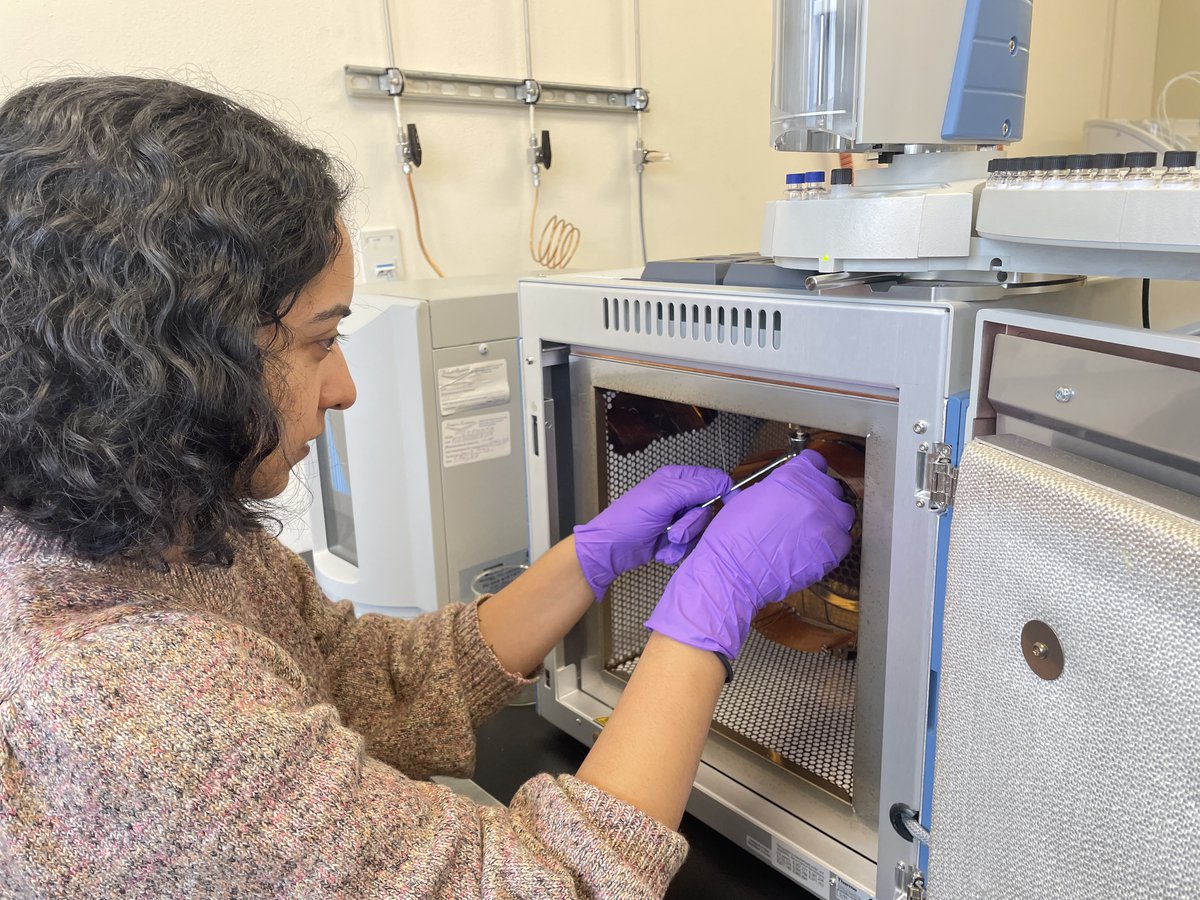
Bhattacharya performs maintenance on her gas chromatograph, a key piece of lab equipment that allows her to quantify the concentrations of leaf waxes in ancient sediments.
The Sloan Fellowship and CAREER award will support Bhattacharya’s work in using past instances of climate change as 'natural experiments' to explore the fundamental dynamics that shape the response of rainfall to climate change. Specifically, her team will use a combination of isotopic analyses of plant biomarkers and climate model experiments to determine how patterns of ocean warming are likely to shape rainfall changes in the future. Through the CAREER award’s educational component, undergraduate and graduate students will work with Bhattacharya throughout the research process, from investigating plant biomarkers in sedimentary sequences, to running and analyzing climate model simulations.
“The support from the Sloan Fellowship and CAREER award comes during a crucial time for my research team,” says Bhattacharya. “We are currently working in settings as diverse as western North America, southern Africa, and the tropical Andes, and are hopeful that the results of our studies will provide valuable insights that are directly relevant to understanding changes in extreme drought and extreme flooding in the future.”
The Physics Behind Cell Migration
A professor at Syracuse University since 2018, Alison Patteson’s research focuses on cell migration and how cells navigate and respond to the physical features of their environment. She and her team are currently investigating how the structural protein vimentin affects cell migration and are also exploring the properties that control the growth of biofilms, which are slimy clusters of microorganisms including bacteria and fungi that can adhere to wet surfaces. The Sloan Fellowship, Cottrell Scholar award and CAREER award will support Patteson’s research in those areas, which she hopes will lead to broad new societal impacts.
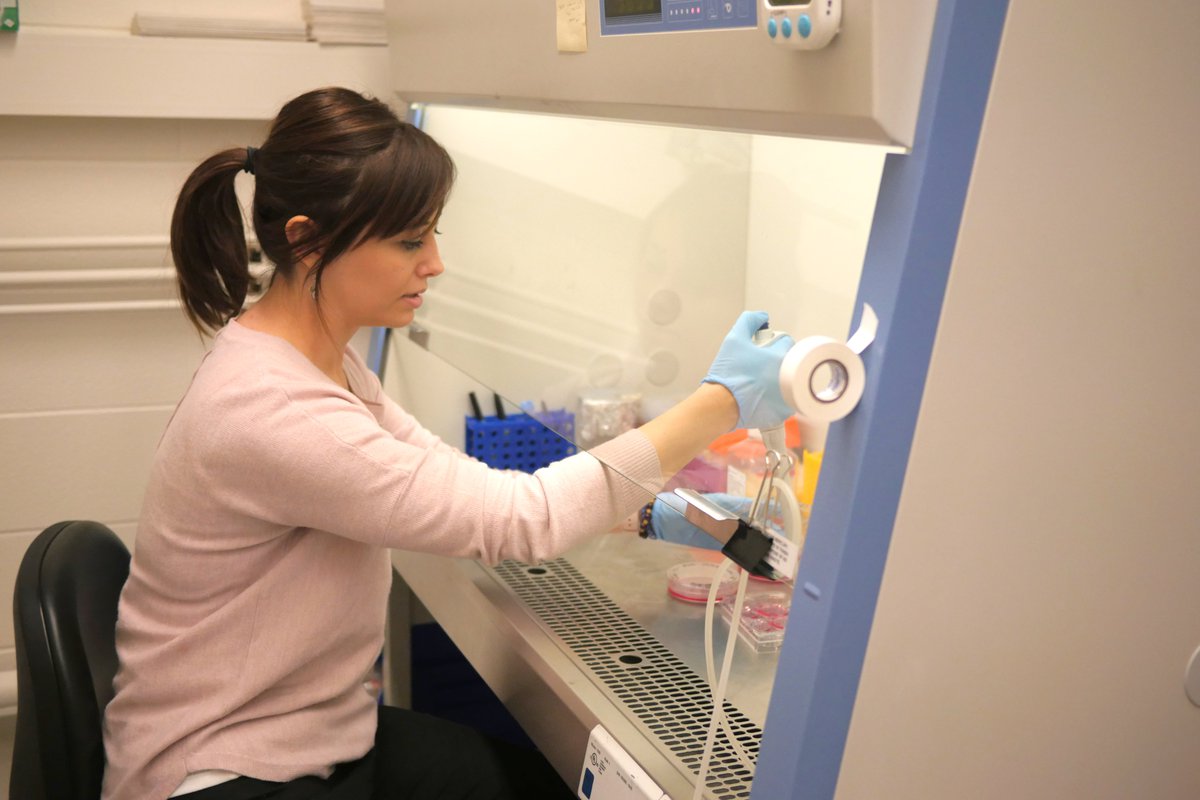
Alison Patteson working in her lab.
With the funding from the Cottrell and Sloan awards, Patteson’s group will explore how the growth of biofilm is affected by a variety of different surface types (or substrates). Some common biofilm examples include dental plaque, the slime that accumulates on river rocks over time, or even bacterial colonization on medical devices like catheters. Patteson’s team will combine physical and computational approaches to develop a framework that describes the mechanical effects of substrates on biofilm growth, potentially identifying new design rules for materials to promote or hinder its ability to grow.
“From infectious diseases to environmental ecosystems, biofilms are all around us,” says Patteson, who is also a member of Syracuse University’s BioInspired Institute. “By measuring the forces that growing biofilms exert on their substrate, these awards will allow us to gain a better understanding of how bacteria can fundamentally remodel the world around them to grow and survive, which could have implications for better predicting how they spread and how we might prevent it.”
Patteson’s CAREER grant project, Biomechanics And Mechanobiology Of Vimentin Intermediate Filaments, builds off her previous research discovery showing that the vimentin cytoskeleton was critical to protecting the cell nucleus against mechanical damage. The cell nucleus, which is typically thought of as rigid, is actually quite fragile and can break open in situations of extreme mechanical stress, says Patteson. While researchers understand that the vimentin network helps protect the nucleus, it remains unclear how it helps cushion the nucleus during migration.
“The CAREER award will enable us to conduct biophysical studies on cell migration and analyze the role of vimentin using 3D imaging,” says Patteson. “This project will ultimately help us understand how cells move and remodel their nuclei without sustaining damage so they can get where they need to go. Vimentin is also overexpressed in many cancers, and results from this work may yield new strategies to suppress aggressive tumor growth.”
Through the Cottrell Scholar and CAREER award’s educational components, Patteson will mentor local high school students from the Syracuse City School District (SCSD). She plans to bring them into labs on campus during a Physics Open House and recruit them to apply for the Physics Department’s summer high school program. Patteson will also develop a new course for undergraduate and graduate students at Syracuse University titled Public Engagement in Physics and STEM. The class will help students develop their own demo materials, disseminate them in a public setting and self-assess their impact.
Better Wound Healing
Olga Makhlynets’ CAREER grant will address current challenges related to wound healing and drug delivery. She and her team will harness the power of antimicrobial peptides, which are short chains of amino acids that play a crucial role in helping the body fight against bacteria and viruses. They will specifically create stimuli-responsive hydrogel materials for wound healing and drug delivery. These “smart” hydrogels, which can respond to their environment and change their stiffness, will be developed for removable wound dressings and arthritis treatment.
In alignment with Syracuse University’s longstanding commitment to supporting veterans and active members of the military, the grant will enable Makhlynets to design a research training program for ROTC undergraduate students at Syracuse University and the SUNY College of Environmental Science and Forestry. In close collaboration with the ROTC office at Syracuse, she will develop a research program with military training requirements in mind, similar to the existing Research Experience for Undergraduates program sponsored by NSF.

Chemistry professor Olga Makhlynets (right) with Quyen Pham ’25 (left). Makhlynets guided Pham during a 2019 summer internship program at Syracuse University.
An additional aspect of the project’s educational component includes a summer chemistry enrichment experience for Syracuse City School District high school students which aims to diversify the STEM workforce. The six-week preparatory program will enhance underrepresented students’ chemistry skills and teach them about the college research experience. Makhlynets was part of a similar program in 2019, where she welcomed SCSD students to her lab on campus to gain insight into research and academic life and carve a pathway for them to pursue a future in STEM. Makhlynets will also design lectures and an exhibition at the Milton J. Rubenstein Museum of Science & Technology (MOST) in Syracuse to teach school children about biomaterials and peptide self-assembly.
“Through interdisciplinary research integrated with educational efforts, this project will help us train the next generation of scientists and engineers in the biomaterial field,” says Makhlynets. “Educational programs will not only provide a training ground for the students, but will also generate valuable results to advance the research field. Exhibitions and presentations at the MOST are designed to spark and retain interest in the field of biomaterials from an early age.”

Further Reading
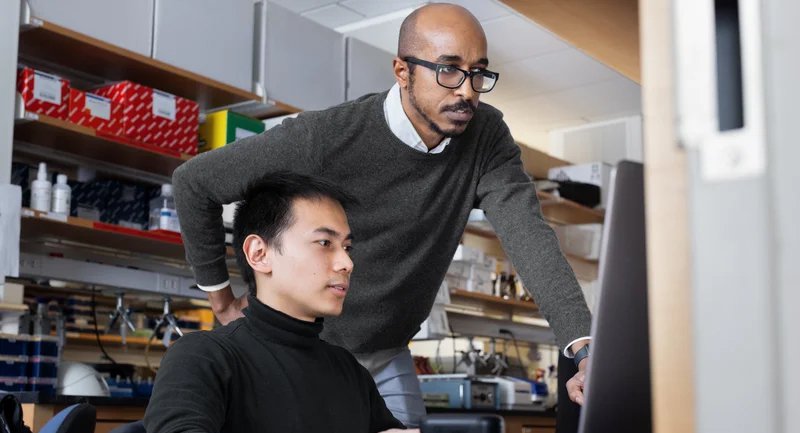
Research News
The College of Arts and Sciences is home to internationally recognized research across and between disciplines. Read about the latest A&S research news.
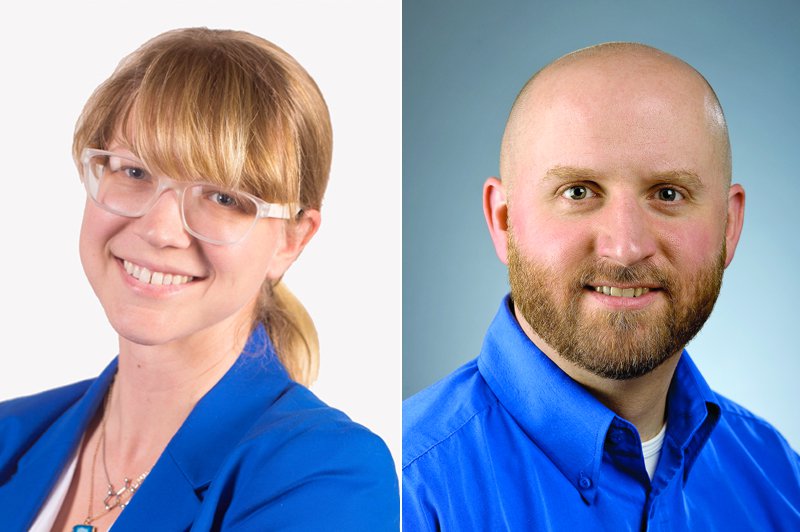
AAAS Fellows
Jennifer Ross of the Department of Physics and Jason Wiles of the Department of Biology were recently named Fellows of the American Association for the Advancement of Science.

